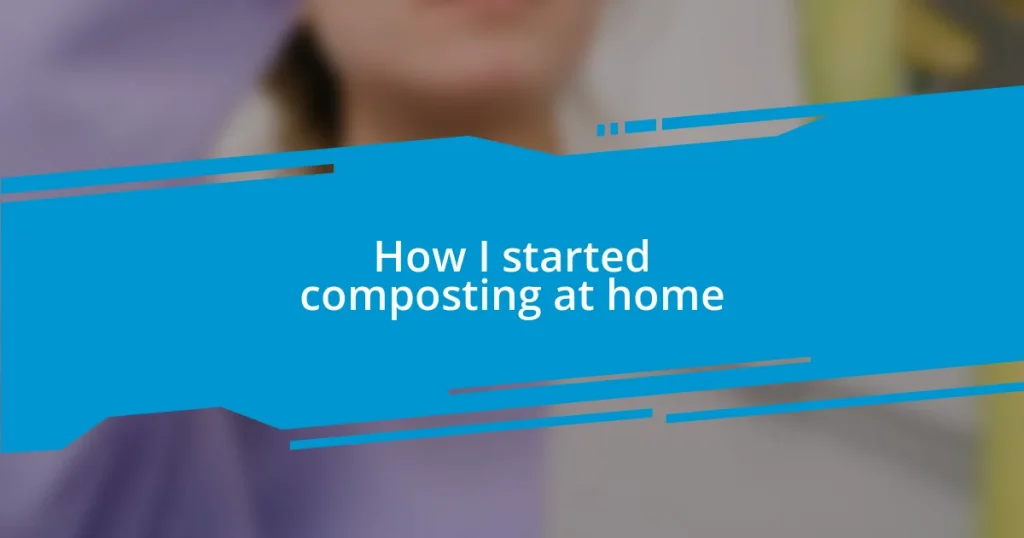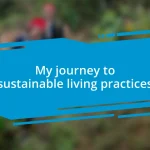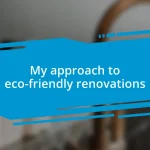Key takeaways:
- Composting involves balancing “green” (food scraps) and “brown” (dried leaves) materials to create nutrient-rich soil while reducing waste.
- Choosing the right composting method depends on your lifestyle and space; options include worm bins for small areas and traditional piles for larger yards.
- Maintaining a compost pile requires attention to moisture, temperature, and material balance, and troubleshooting common issues improves the composting process.
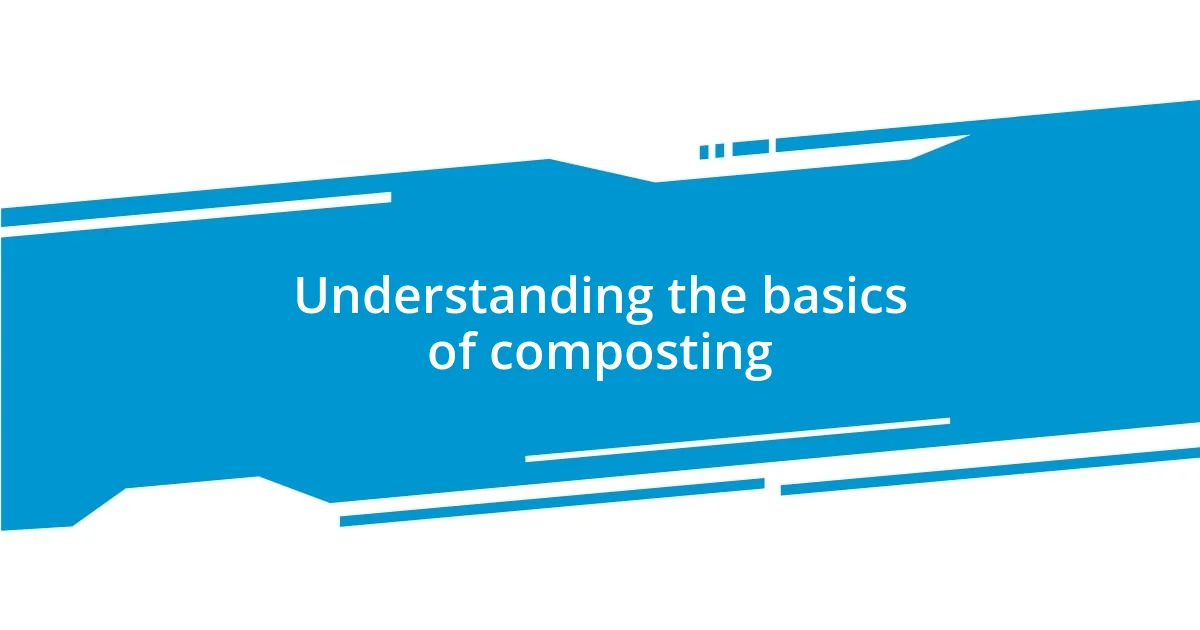
Understanding the basics of composting
Composting is fundamentally the recycling of organic matter, transforming kitchen scraps and yard waste into nutrient-rich soil. I still remember the first time I turned my vegetable peels and coffee grounds into usable compost—it felt like a little magic show happening right in my backyard. This process not only reduces waste but also enriches our garden soil, which is something I find incredibly rewarding.
At its core, composting is about balancing “green” materials, like those food scraps, with “brown” materials, such as dried leaves and cardboard. Have you ever noticed how a pile of leaves can seem untouched over time, while adding some kitchen waste can kickstart decomposition? It’s fascinating! The microbes involved in composting thrive on this balance, breaking down the materials into rich compost that can revitalize your plants.
When I think about composting, I appreciate how it connects us to nature and teaches us about waste. It’s a gentle reminder that even our leftovers can serve a purpose—simply tuning into this harmony can transform how we view disposal. Why not start with those banana peels and see how they can benefit your garden instead of ending up in the trash?
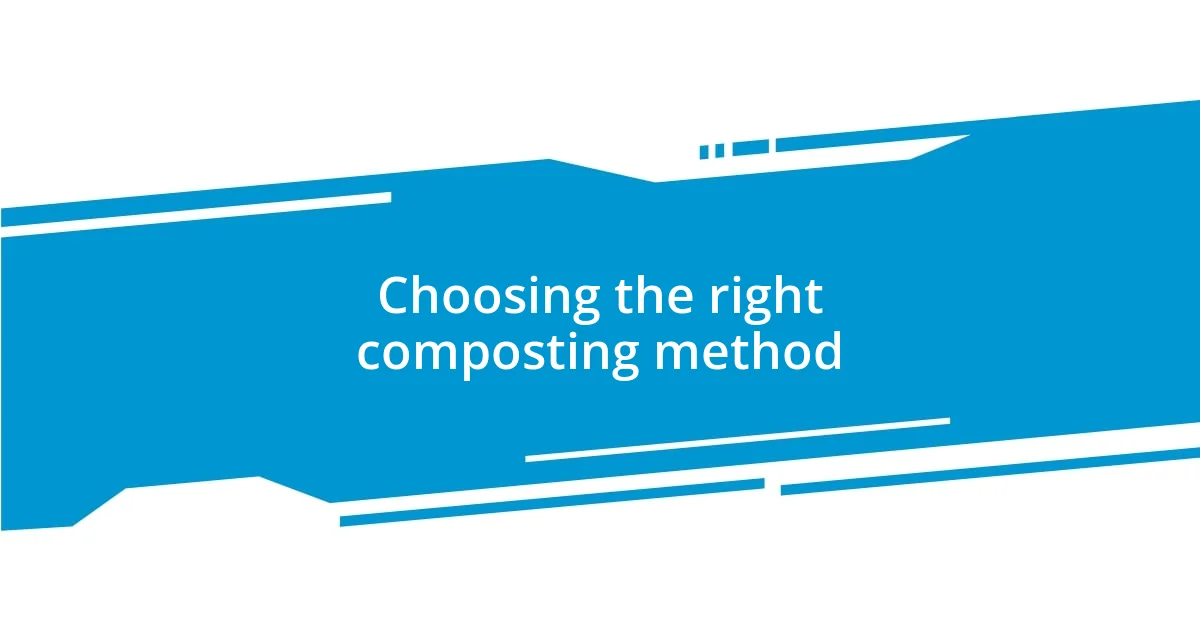
Choosing the right composting method
When it comes to choosing the right composting method, I have always found it crucial to consider my lifestyle and available space. For instance, if you live in a small apartment, a worm bin or a compact compost tumbler might be your best bet. I remember my neighbor opting for a worm bin—she loved the idea of having those little wrigglers working their magic right on her kitchen counter! It’s both practical and charming.
On the other hand, if you have a spacious backyard, a traditional compost pile can work wonders. I started with a simple pile behind my shed and was amazed at how quickly kitchen scraps transformed into rich compost with just a bit of patience. The joyful process of turning the pile, getting my hands dirty, and then finally using the compost in my garden gave me a profound sense of accomplishment. That connection to the earth is something I cherish deeply.
Ultimately, the right composting method is the one that fits your daily routine and goals. I’ve learned that experimenting is part of the fun—why not try a couple of methods to see what works best for you? It’s important to remember that composting is not just a chore; it’s an opportunity to nurture our environment and create something beautiful from what we typically discard.
| Composting Method | Best For |
|---|---|
| Worm Bin | Small spaces, quick composting |
| Compost Tumbler | Efficient turning; faster decomposition |
| Traditional Pile | Large yards, minimal maintenance |
| Bokashi | Indoor composting, handling meat and dairy |
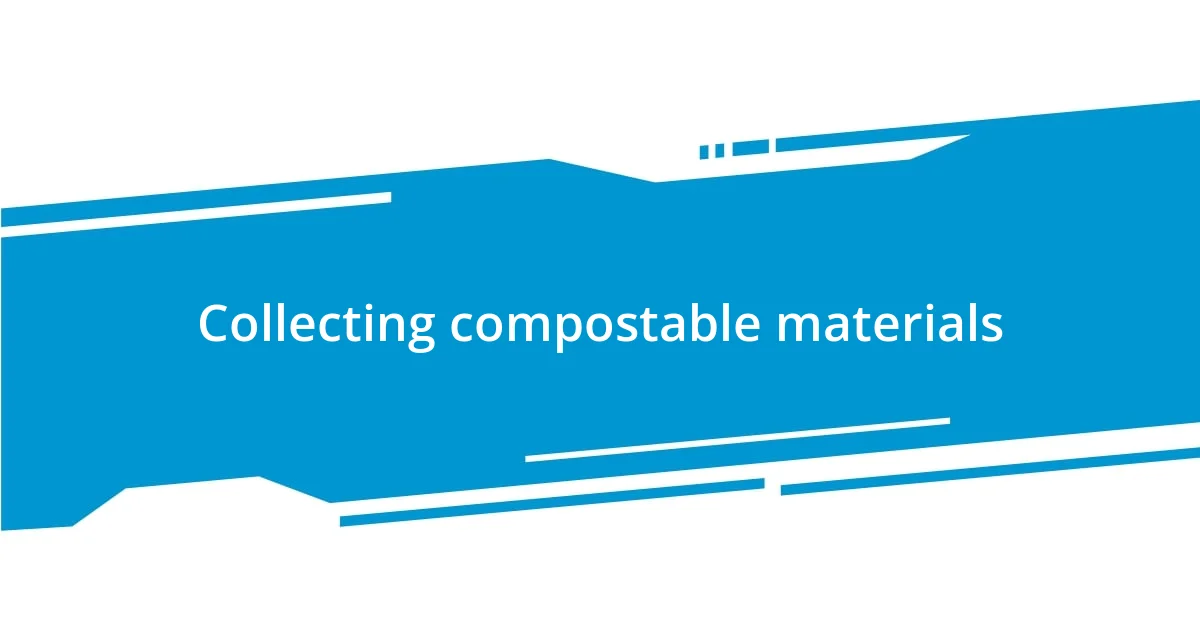
Collecting compostable materials
When I first started collecting compostable materials, I was surprised by how easy it was to gather them. The key is to have a dedicated container—something that fits nicely on your kitchen counter. I opted for a stylish little compost bin with a lid to keep everything neat and odor-free. Remember, every time I would toss in an apple core or leftover salad, I felt like I was actively participating in a sustainable cycle. It became a small ritual that connected me to the food I consume.
Here are some materials I found perfect for my composting journey:
- Vegetable and fruit scraps (like peelings, cores, and overripe produce)
- Coffee grounds and filters (my morning brew turned into nutrient-rich soil!)
- Eggs shells (crushed, they add bone meal to my compost)
- Grass clippings (great for balancing moisture)
- Dried leaves and twigs (a fantastic source of carbon)
- Shredded cardboard and paper (just be sure they’re non-glossy!)
I was amazed at how quickly my small collection started to pile up! By keeping my compost bin handy and making it a part of my daily routine, I not only reduced my waste but also found a new appreciation for the life cycle of food. Plus, it was fun to see how many scraps I could save from the landfill, knowing they were doing something good for my garden.
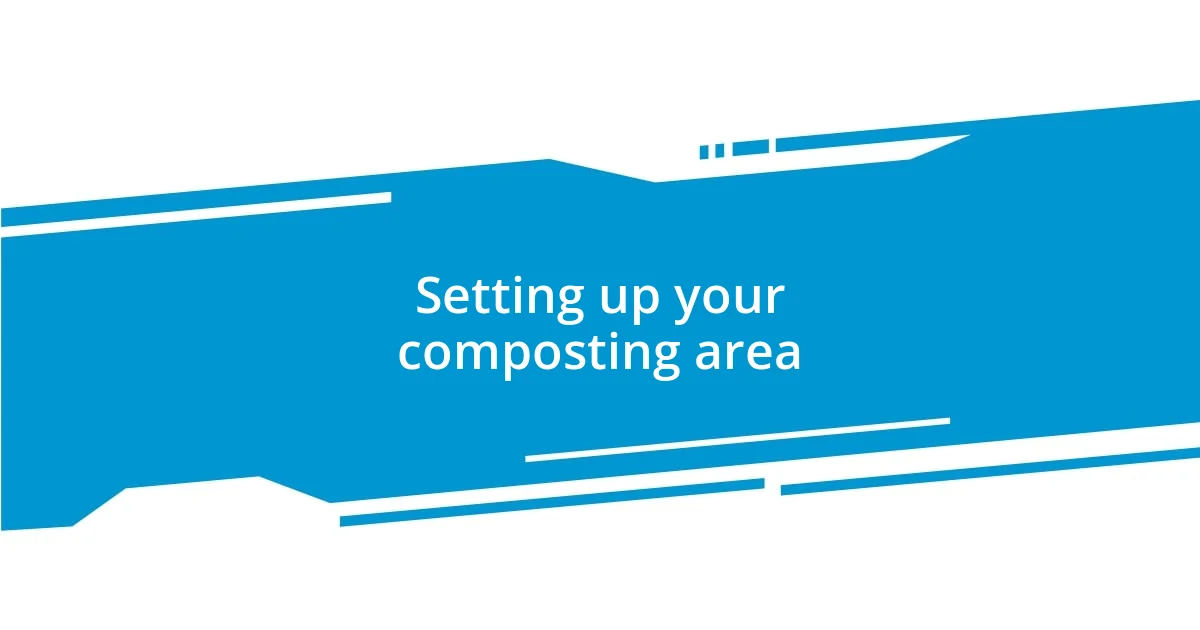
Setting up your composting area
When I set up my composting area, I wanted to create a space that felt welcoming and accessible. I remember clearing a small corner in my yard and adding a few colorful garden stakes to mark the spot. It was a simple act that made the area feel special, and I found myself excited to go there regularly. Choosing the right spot is essential; it should be convenient for you to add materials but also out of the way enough to avoid smelling up your space.
Next, I invested in a sturdy compost bin that fit my needs. I chose one with good ventilation because I learned that proper airflow helps speed up decay. I recall watching as the material gradually transformed, turning from fresh scraps into dark, rich compost. It’s fascinating how nature works when given the right conditions! If you go with a bin, ensure it has a way to easily turn or mix the compost—I can’t stress how much simpler it made the process.
Lastly, it’s important to layer your materials while composting. I picked up on this pretty quickly, realizing that browns, like dried leaves, and greens, like fruit scraps, each play vital roles in the composting process. Remember my first few attempts? They were messy! But, as I learned, maintaining a good balance maximized my results. What’s more satisfying than knowing you’re nurturing the earth with something you created yourself?
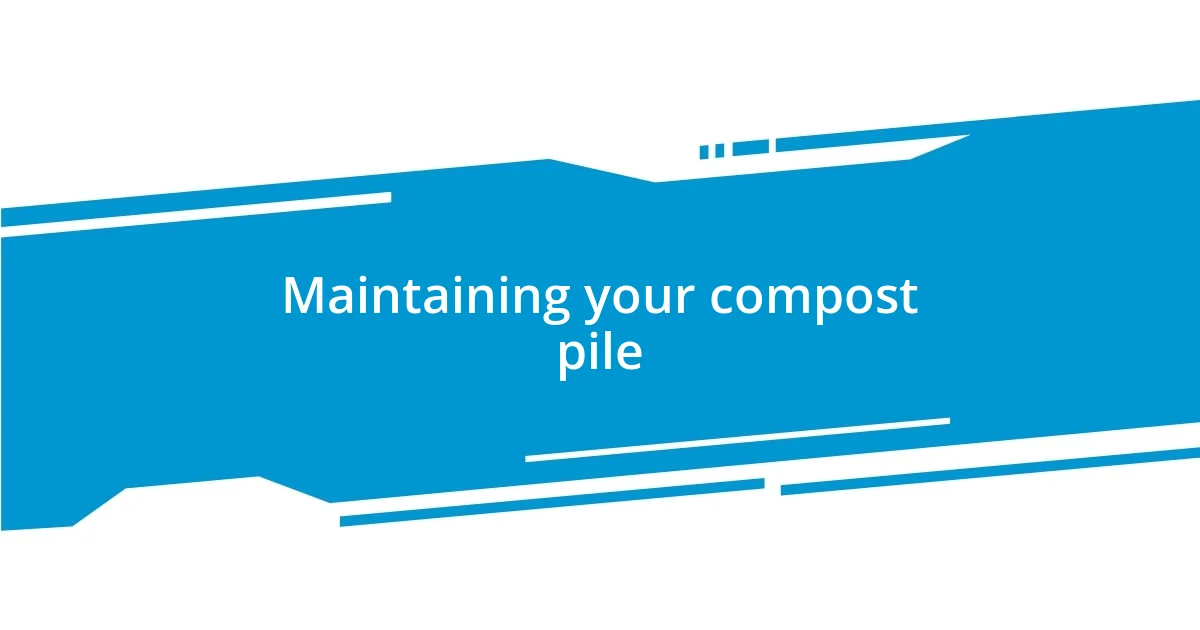
Maintaining your compost pile
Maintaining a compost pile is like nurturing a living organism; it requires some attention but rewards you immensely. I still remember the first time I turned my pile—it was like unearthing treasure! I couldn’t believe how quickly the materials broke down with just a little effort. Regular turning not only aerates the pile but helps mix the materials, fostering that sweet transformation into rich compost.
Moisture levels play a significant role as well. I learned this the hard way when my pile became too dry to decompose effectively. Now, I check it frequently, adding a splash of water if the pile feels crumbly. It’s a balance; too much moisture can lead to a smelly mess. There’s something oddly satisfying about getting your hands dirty while ensuring that my compost is thriving—it’s like giving back to the earth.
Temperature is another aspect that surprised me during my composting journey. I recall when I first started, I didn’t realize just how much heat a healthy pile generates. Feeling the warmth radiating from my compost heap was exhilarating! It reminded me that I was fostering natural processes, breaking down organic matter into something life-giving. If your pile gets too hot, just turn it to cool it down, and remember: it’s all part of the learning curve. Isn’t it fascinating how even something as simple as composting can deepen our connection to the environment?
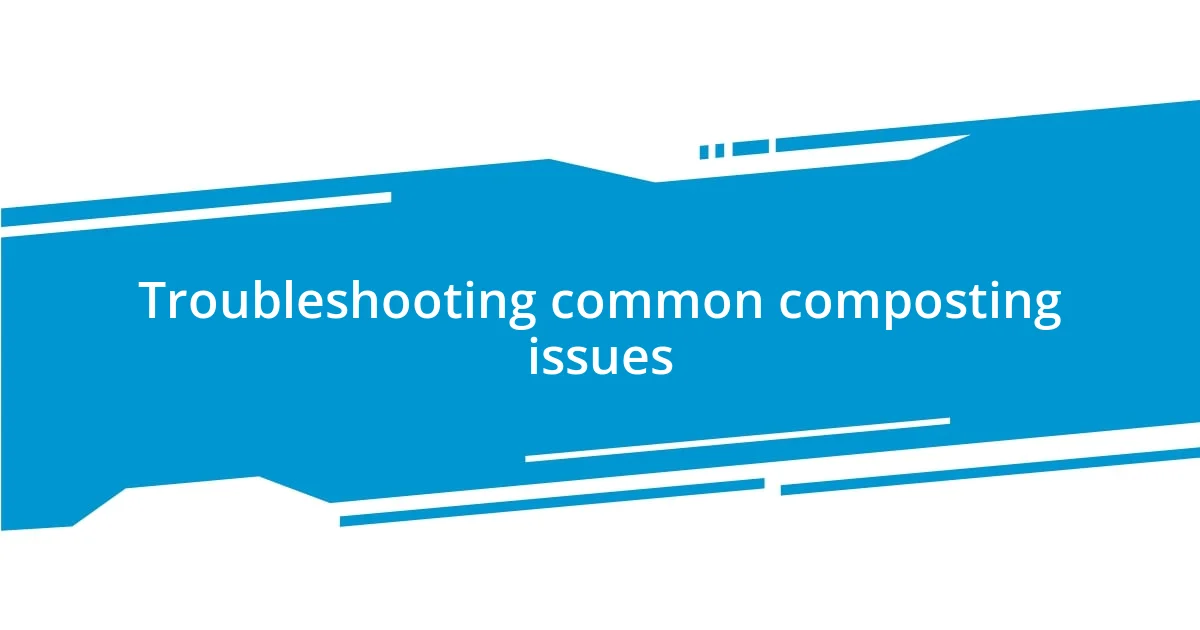
Troubleshooting common composting issues
When composting goes awry, it can feel frustrating, but I’ve learned a few tricks along the way. One time, I opened my bin to find it teeming with fruit flies. It was definitely a wake-up call! I discovered that adding more browns, like shredded paper or dry leaves, can help absorb excess moisture and reduce those pesky pests. Isn’t it interesting how small changes can lead to big results?
Another issue that surfaced for me was a smelly compost pile. I remember opening the lid and recoiling at the odor that hit me. After some research, I realized that an unbalanced mix or too much moisture was likely to blame. Now, when I notice an odor, I immediately turn the pile and add in dry materials to improve the aeration. Have you ever experienced that foul smell? It’s a sign to tweak your method, but it’s not the end of the world!
Lastly, if your compost isn’t breaking down fast enough, don’t despair. I once let a batch languish for weeks without much change, and I thought I failed! To my surprise, a simple addition of greens—like kitchen vegetable scraps—revved up the process significantly. Sometimes a little patience and a bit more nitrogen can do wonders. Have you ever felt that initial impatience? I learned to trust the process, and when I finally dug into a batch of rich compost, it made all the effort worthwhile!











